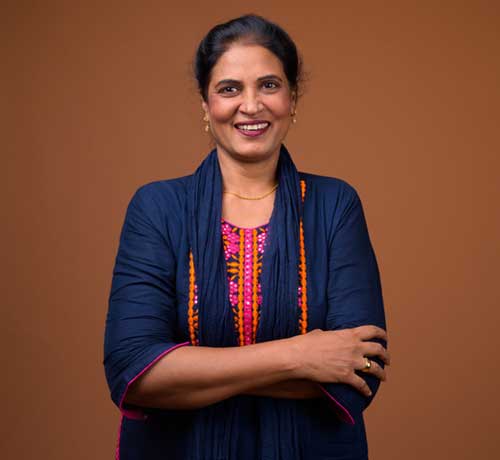Introduction:
In recent years, significant strides have been made in understanding and treating cardiovascular disease (CVD). However, there remains a pressing issue: the gender gap in cardiac care. Women often face unique challenges in accessing timely diagnosis, appropriate treatment, and comprehensive support for heart-related conditions. In this article, we delve into the complexities of women’s health in cardiology, exploring the obstacles they encounter and proposing strategies to overcome them.

Recognition of Gender Disparities:
Despite growing awareness, gender disparities persist in the field of cardiology. Women are frequently underrepresented in clinical trials, leading to gaps in understanding how CVD manifests and progresses in female patients. Additionally, societal misconceptions and biases regarding heart disease as a “male issue” contribute to delayed diagnosis and suboptimal care for women. Addressing these disparities requires a shift in mindset among healthcare providers to recognize the unique cardiovascular needs of women and allocate resources accordingly.
Hormonal Influences and Unique Risk Factors:
Hormonal fluctuations throughout a woman’s life, including during menstruation, pregnancy, and menopause, can impact cardiovascular health. Conditions such as gestational diabetes and preeclampsia during pregnancy are associated with an increased risk of developing CVD later in life. Moreover, hormonal therapies, such as hormone replacement therapy, may affect cardiovascular risk factors and require careful consideration in women with pre-existing heart conditions. Understanding the interplay between hormonal influences and genetic predispositions can help personalize treatment strategies and improve outcomes for women with cardiac genetic disorders.
Treatment Disparities and Underutilization of Guidelines:
Studies have shown that women are less likely than men to receive guideline-recommended therapies for CVD, including medications, invasive procedures, and cardiac rehabilitation. This underutilization of evidence-based treatments contributes to poorer outcomes and higher mortality rates among women with heart disease. Addressing this disparity requires proactive efforts to educate healthcare providers about the importance of adhering to gender-specific guidelines and individualizing treatment plans for female patients. Additionally, increasing diversity and representation in clinical trials and guideline development panels can ensure that women’s cardiovascular health needs are adequately addressed in research and practice.
Psychosocial and Socioeconomic Factors:
Women’s cardiovascular health is influenced by a multitude of psychosocial and socioeconomic factors, including stress, depression, caregiving responsibilities, and financial constraints. These factors can impact access to healthcare services, medication adherence, and engagement in lifestyle modifications. Recognizing and addressing these social determinants of health are essential for delivering holistic and patient-centered care to women with heart disease. Healthcare providers should prioritize screening for psychosocial risk factors and provide appropriate support and resources to address the unique needs of women in diverse social and economic contexts.
Pregnancy-Associated Cardiovascular Risks:
The rising prevalence of cardiovascular complications during pregnancy, including gestational hypertension, preeclampsia, and peripartum cardiomyopathy, pose significant health risks to women and underscore the importance of preconception counseling and comprehensive prenatal care. Multidisciplinary collaboration between obstetricians, cardiologists, and maternal-fetal medicine specialists is essential to optimize maternal and fetal outcomes. Moreover, postpartum follow-up and long-term cardiovascular risk assessment are crucial for identifying and managing ongoing cardiovascular risks in women who have experienced pregnancy-related complications.
Coronary Artery Disease and Women:
Women often experience atypical symptoms during a heart attack compared to men. While chest pain is a classic symptom, women may present with fainter symptoms like breathlessness, nausea, fatigue, or discomfort in the jaw, neck, or back. This variability in symptom presentation can lead to under-recognition and delayed diagnosis of myocardial infarction (MI) in women, contributing to poorer outcomes. Hormonal fluctuations throughout a woman’s life, including during menstruation, pregnancy, and menopause, can influence cardiovascular health and the risk of MI. For example, estrogen has cardioprotective effects, but its levels decline during menopause, potentially increasing the risk of MI in postmenopausal women. Moreover, gestational hypertension or preeclampsia may also predispose to coronary artery disease later in life.
Conclusion:
The challenges facing women’s health in cardiology are multifaceted and require a concerted effort from healthcare providers, researchers, policymakers, and society as a whole to overcome. By recognizing and addressing gender disparities in CVD, improving diagnostic accuracy, tailoring treatment approaches to women’s unique needs, and addressing psychosocial and socioeconomic factors, we can bridge the gender gap in heart care and improve outcomes for all individuals affected by cardiovascular disease. It is imperative that we prioritize women’s cardiovascular health and work towards a future where gender no longer dictates the quality of cardiac care received.

Dr. Kamal Kant Jena
Associate Consultant – Interventional Cardiologist
Kauvery Hospital Chennai

